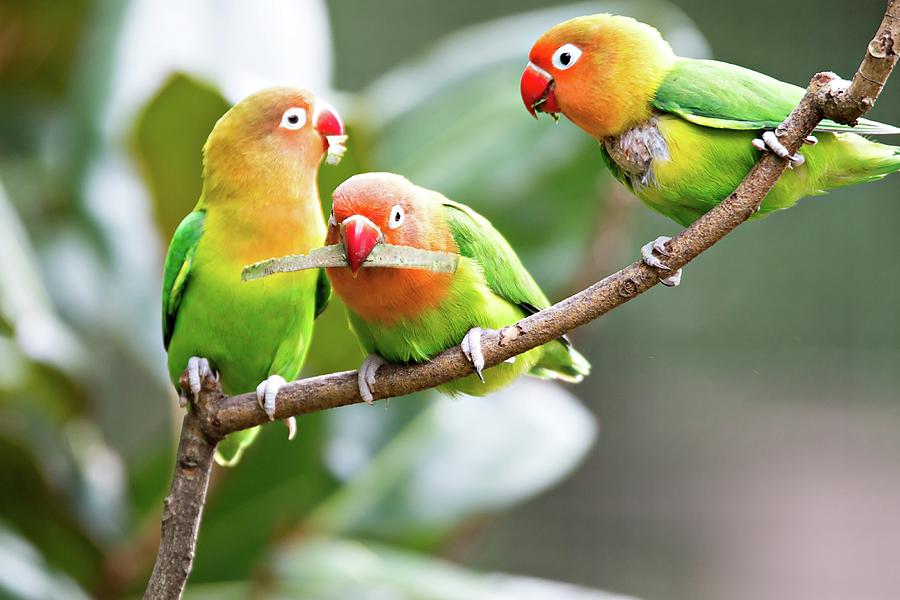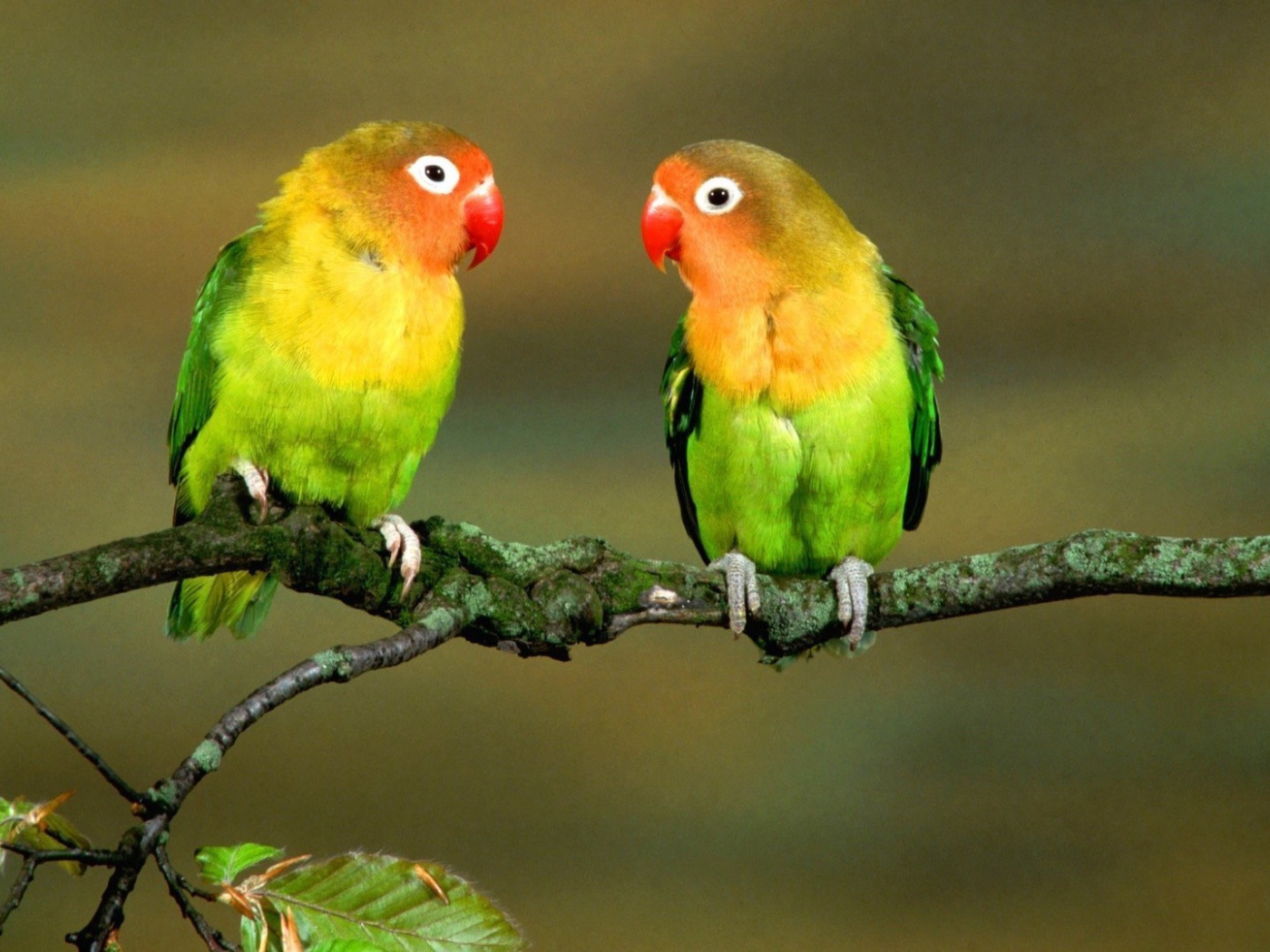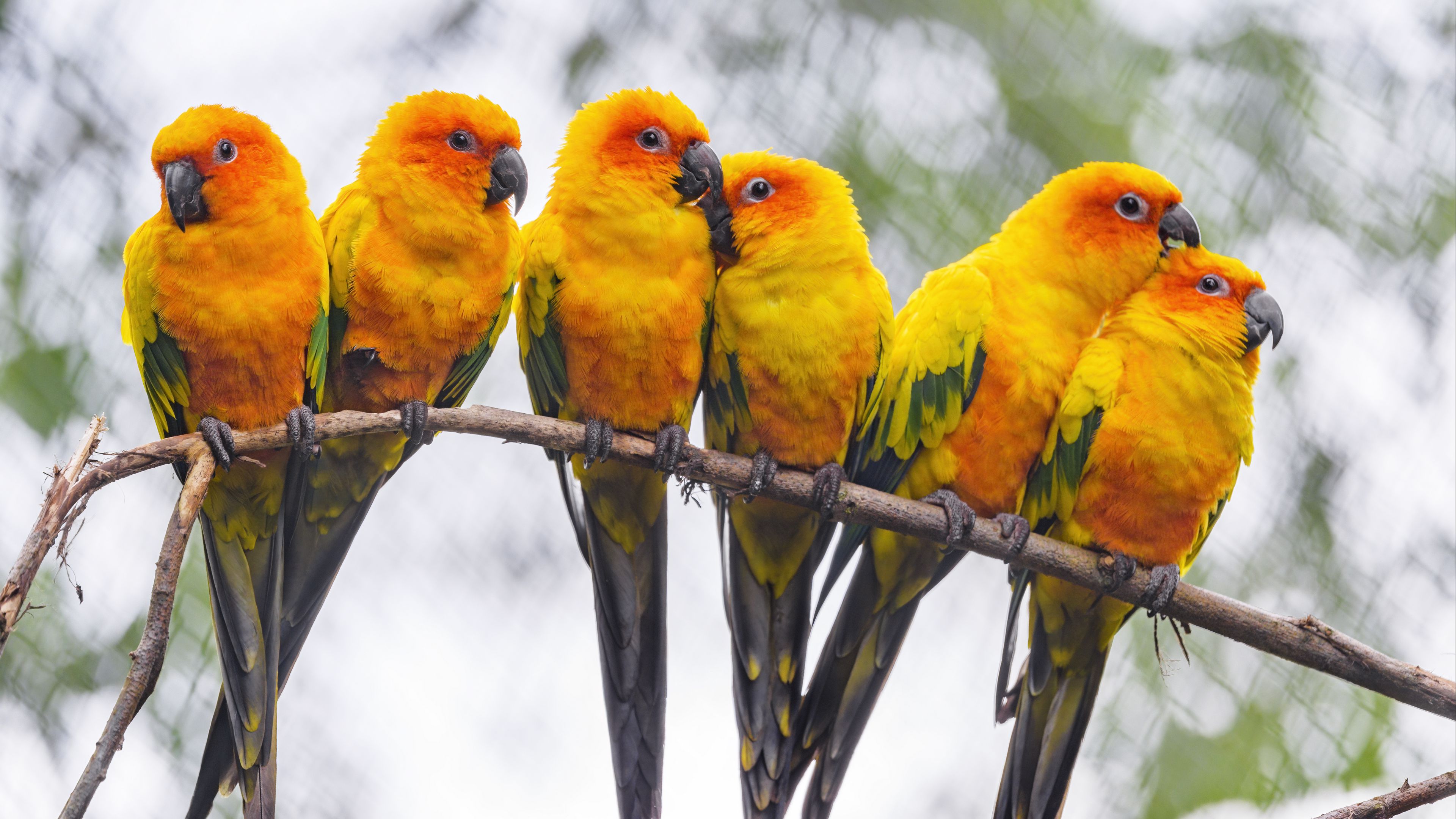Fischer’s lovebird (Agapornis fischeri) is indeed a small parrot species belonging to the genus Agapornis. The species was first discovered in the late 19th century and is named after Gustav Fischer, a German explorer.

Fischer’s lovebirds are known for their vibrant plumage and social behavior. They are native to a specific region in northeastern Tanzania, particularly around Mount Kilimanjaro and the bordering areas of Kenya. These parrots are popular in aviculture due to their small size, colorful appearance, and charming personalities.
Appearance
Fischer’s lovebirds (Agapornis fischeri) exhibit a distinctive and colorful appearance. They have a predominantly green plumage covering their back, chest, and wings. The neck area displays a vibrant golden yellow coloration that gradually darkens to an orange hue as it extends upwards. The top of their head is adorned with olive green feathers.

One of the notable features of Fischer’s lovebirds is their bright red beak, which stands out against their plumage. The upper surface of their tail feathers may exhibit purple or blue hues, adding further visual interest to their appearance.
These lovebirds also possess a white circle of bare skin, commonly referred to as an eye-ring, encircling their eyes. This eye-ring serves as a distinctive feature and contributes to their overall charming appearance.
In terms of differences between adults and young birds, juvenile Fischer’s lovebirds resemble the adults but with a duller coloration overall. Additionally, the base of their mandible (lower beak) may display brown markings, distinguishing them from the fully mature individuals.
Distribution

Fischer’s lovebirds are primarily found in a relatively small area of east-central Africa, specifically in the northern regions of Tanzania, south and southeast of Lake Victoria. Their distribution is limited to this particular region.
During periods of drought, some Fischer’s lovebirds may migrate westward into Rwanda and Burundi in search of more favorable and moist conditions. However, their primary range is centered in Tanzania.
These lovebirds inhabit savannas, which are characterized by isolated clusters of trees dispersed across grassy plains. They are also commonly found near water sources, as access to water is crucial for their survival. Additionally, Fischer’s lovebirds are known to frequent agricultural areas, likely attracted by the availability of food resources in such environments.
In terms of biogeography, Fischer’s lovebirds belong to the Afrotropical realm, which encompasses most of sub-Saharan Africa. Within the WWF biomes classification, they are associated with the tropical dry forest and tropical savanna biomes, reflecting their preference for habitats with a combination of trees, grasslands, and access to water.
Habits and Lifestyle
Fischer’s lovebirds are diurnal birds, meaning they are active during the day. They typically live and move around in small flocks, and their flight is fast and agile, accompanied by audible wingbeats. These lovebirds are highly vocal and have a distinctive high-pitched chirp, which can make them quite noisy, especially when they communicate or vocalize.
The collective term used for a group of Fischer’s lovebirds can be referred to as a flock, company, or pandemonium, highlighting their social nature and tendency to gather in groups.

In terms of their lifestyle, Fischer’s lovebirds are arboreal, meaning they primarily inhabit and move among trees. They engage in zoochory, which refers to the dispersal of seeds through their feeding habits and subsequent seed deposition. They are nomadic in nature, meaning they do not have fixed or permanent territories and may move across different areas in search of resources.
Fischer’s lovebirds are oviparous, meaning they lay eggs, and their young hatch from these eggs. The young birds are altricial, which indicates that they are born in a relatively undeveloped state and rely on parental care and feeding until they are capable of fending for themselves.
Regarding seasonal behavior, Fischer’s lovebirds are not considered migratory. They typically do not undertake long-distance seasonal movements but remain within their habitat throughout the year.
Diet and Nutrition
In terms of diet, Fischer’s lovebirds are classified as herbivores with a varied diet. They are granivores, feeding primarily on seeds, and they also consume fruits, berries, and occasionally crops such as maize and millet found in farmlands. Their diet can be described as frugivorous, granivorous, and herbivorous, reflecting their consumption of fruits, seeds, and plant matter.
Mating Habits
Fischer’s lovebirds exhibit monogamous mating behavior, forming strong pair bonds that often last for their lifetime. The term “lovebird” originated from the affectionate and close relationships these birds form with their mates. When separated, both individuals may experience a decline in physical well-being, highlighting the importance of their bond. They prefer to maintain physical contact as much as possible.
Breeding among Fischer’s lovebirds typically occurs during two periods: January to April and June to July. During the breeding season, they construct their nests in tree holes located 2 to 15 meters (6.5 to 49 feet) above the ground.
The eggs of Fischer’s lovebirds are white in color, and a clutch typically contains around 4 or 5 eggs, although clutch sizes can range from 3 to 8 eggs. The female takes on the responsibility of incubating the eggs for a period of approximately 23 days.
After hatching, the chicks remain in the nest and are cared for by both parents. They fledge, or acquire the ability to fly, from the nest around 38 to 42 days after hatching, marking the start of their independent phase of life.
Population
Population threats
In 1987, the Fischer’s lovebird was the most popular traded wild bird in the world. Unfortunately, this species is still caught for trade. Fischer’s lovebirds also suffer from changes in climate and hybridization with Yellow-collared lovebirds.

Population number
According to IUCN Red List, the total population size of the Fischer’s lovebird is 290,000-1,002,000 individuals. Currently, this species is classified as Near Threatened (NT) on the IUCN Red List, and its numbers today are decreasing.
